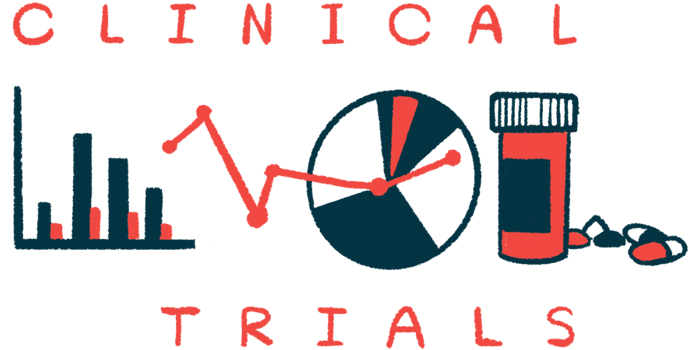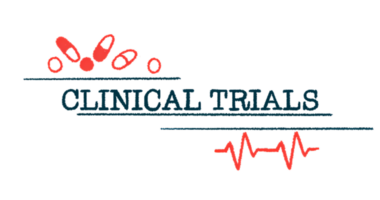P2B001 may be ‘valuable’ first-line treatment for early Parkinson’s
Pharma Two B's combo therapy found to ease symptoms in clinical trials

P2B001, Pharma Two B’s investigational combination therapy of pramipexole and rasagiline, safely and effectively lessens symptoms in people with early-stage Parkinson’s disease, according to pooled data from Phase 2b and Phase 3 clinical trials.
The combo treatment was also found to be as effective as titrated extended-release pramipexole — an approved Parkinson’s therapy sold as Mirapex ER (with generics available) — but was associated with fewer sleep-related adverse events.
The results were presented in a poster, titled “Efficacy of P2B001 in patients with Early Parkinson’s Disease: Analysis of an Integrated Phase 2b and 3 Database,” at the Annual Meeting of the Parkinson Study Group held Dec. 5-8 in Nashville, Tennessee.
Working toward new drug application for FDA
“These data provide further support for P2B001 as a first-line, once-daily combination pill treatment for people with early PD [Parkinson’s disease] that requires no titration,” Dan Teleman, CEO of Pharma Two B, said in a company press release. “Currently, we are focused on completing our merger with Hepion and thereafter look forward to moving P2B001 towards NDA [a new drug application] submission.”
NDAs are requests to the U.S. Food and Drug Administration for approval of a new drug product.
Parkinson’s is caused by the progressive dysfunction and death of dopaminergic neurons, the nerve cells that produce a signaling chemical called dopamine. This leads to impaired dopamine signaling in the brain, resulting in the disease symptoms.
P2B001 is an experimental oral therapy that combines low doses of extended-release formulations of pramipexole, a molecule that mimics dopamine’s effects in the brain, and rasagiline, which increases dopamine levels by blocking its recycling. As the name suggests, extended-release formulations allow medications to be released slowly into the bloodstream to prolong their effects.
Both molecules are individually approved for easing Parkinson’s symptoms, although at higher doses than those used in P2B001. An extended-formulation of pramipexole is sold as Mirapex ER by Boehringer Ingelheim (with generics available), and an immediate-release formulation of rasagiline is marketed as Azilect by Teva Pharmaceuticals (with generic formulations available).
Combination may have higher therapeutic benefit than either treatment alone
Previous animal studies indicated the combination of the two drugs could have a higher therapeutic benefit than either therapy alone.
A Phase 2b trial (NCT01968460) tested three months of treatment with P2B001, at a low and high dose of pramipexole, against a placebo in 149 people with early Parkinson’s.
Results showed once-daily treatment had a dose-dependent effect at easing symptoms, as assessed with the Unified Parkinson’s Disease Rating Scale (UPDRS), a standard scale to evaluate disease burden in which higher scores indicate worse disease.
A three-month Phase 3 study (NCT03329508) evaluated the therapy’s safety and efficacy in 544 early-stage Parkinson’s patients, all diagnosed in the past three years and not using any Parkinson’s treatments.
Participants were randomly assigned to receive either P2B001 (0.6 mg pramipexole/0.75 mg rasagiline), each component alone at the same dose as in P2B001, or extended-release pramipexole (titrated dose based on clinical responses).
Data demonstrated that P2B001 was more effective than either component alone, and had a comparable efficacy to that of Mirapex ER.
Newly-presented findings concerned 318 participants from the two trials who received at least one dose of the assigned treatment and had one or more UPDRS measurements during follow-up. A total of 196 patients were treated with P2B001 and 72 with extended-release pramipexole, while 50 patients were given a placebo.
“The poster includes robust safety and efficacy data from two … studies, which compared once-daily P2B001 to titrated pramipexole ER (PramiER) or placebo, over a 12-week period,” said Henry Moore, MD, the poster presenter and a professor of clinical neurology at the University of Miami’s Miller School of Medicine.
3 months of P2B001 associated with greater reductions in UPDRS scores
Pooled results showed three months of P2B001 treatment was associated with significantly greater reductions in test scores evaluating patients’ motor experiences of daily living (UPDRS-Part 2) and motor symptoms (UPDRS-Part 3) compared with a placebo.
Particularly, greater reductions in test scores were observed with P2B001: the total UPDRS score by 5.85 points more, UPDRS-Part 2 scores by 2.17 points more, and UPDRS-Part 3 scores by 3.6 points more.
There were no significant score differences between the P2B001 and pramipexole groups, indicating that the experimental therapy had a similar efficacy to that of titrated extended-release pramipexole.
However, P2B001-treated patients had significantly less worsening in daytime sleepiness, a known side effect of dopaminergic medications that mimic or increase levels of dopamine, relative to extended-release pramipexole. Those given P2B001 were also significantly less likely to be classified as having excessive daytime sleepiness (7.7% vs. 36.1%).
The treatment was also found to be generally well-tolerated, with a safety profile similar to that of the placebo. P2B001 also resulted in fewer adverse events related to sleep and dopamine signaling than extended-release pramipexole, including somnolence (drowsiness), neuropsychiatric problems, and orthostatic hypotension, where blood pressure drops significantly when standing up.
“P2B001 consistently demonstrated a favorable risk-benefit profile in treating [Parkinson’s disease] symptoms in early-stage patients, compared to the groups receiving other, commercially available therapies,” Moore said. “It therefore could be a valuable potential first-line therapy for such patients who are often treated by general neurologists and primary care physicians.”









